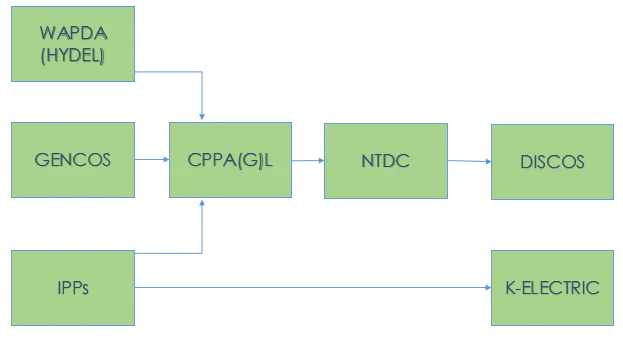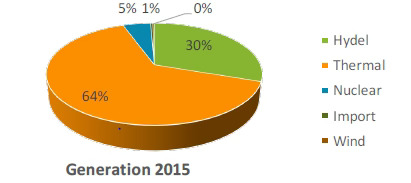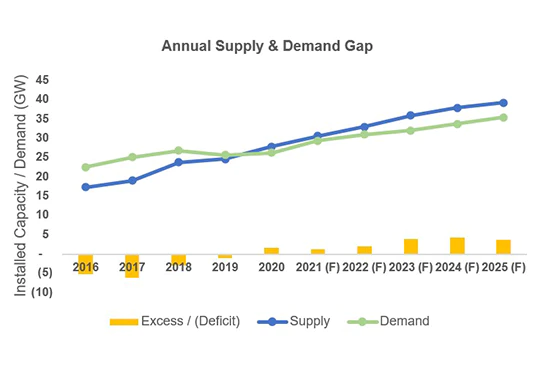Energy Sector Overview

Structure Of Energy Sector
A number of public and private sector entities operate in the power sector in Pakistan. Generation is provided by WAPDA (hydel power), four public sector generation companies (GENCOs) and a number of Independent Power Producers (IPPs). Power is purchased by the Central Power Purchasing Authority Guarantee Limited (CPPA(G)L). The transmission system in Pakistan is run by a public sector entity, National Transmission and Despatch Company Limited (NTDCL), which provides the generated electricity to regional, public sector, distribution companies (DISCOs) which are then responsible for connecting to the end-consumer. Operation of the sector as a whole is overseen by the National Electric Power Regulatory Authority (NEPRA), with a mandate to ensure fairness and transparency among all entities.
Generation Mix

The power sector in Pakistan is a mix of thermal, hydro and nuclear power plants. Originally the ratio of hydel to thermal installed generation capacity was about 67% to 33% (1985). As on 30th June, 2015, the total installed capacity of the country was 24,823 MW of which the share of thermal power plants was 16,814 MW (67.74%) followed by hydel power plants 7,116 MW (28.67%), nuclear power plants 787 MW (3.17%) and wind power plant 308 MW (0.43%).
Renewable Energy
Mainstreaming of renewable energy and greater use of indigenous resources can help diversify Pakistan’s energy mix and reduce the country’s dependence on any single source, particularly imported fossil fuels, thereby mitigating against supply disruptions and price fluctuation risks. When properly assessed for their externalities, renewable energy options can become economically competitive with conventional supplies on a least-cost basis. Pakistan is particularly rich in hydropower resources, and potential sites amounting to a total of 100,000 MW have been identified in the northern areas. Currently the share of renewable sources (hydro, wind and solar) stands at around 30% of installed capacity. However, given the strong potential, Pakistan has the option of diversifying its energy mix by developing these resources.
Energy Crisis
The deficit in demand and supply, due to acute electricity shortage, lies at around 5,000 MW. The Government of Pakistan (GOP) has developed an action plan to meet the deficit by 2018 (the election year) and has initiated a number of mega generation projects to add power to the grid, based on a variety of fuels, including Re-Liquefied Natural Gas, Coal and Hydro Power Projects. The total installed capacity is expected to rise to 35,000 MW by 2020. In addition, numerous power projects are also included in the China-Pakistan Economic Corridor (CPEC) agreement, which is expected to have a positive impact on growth and development.
